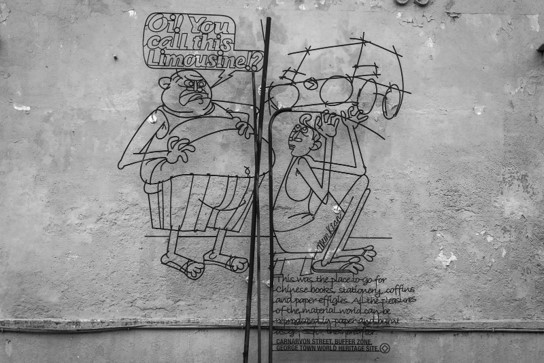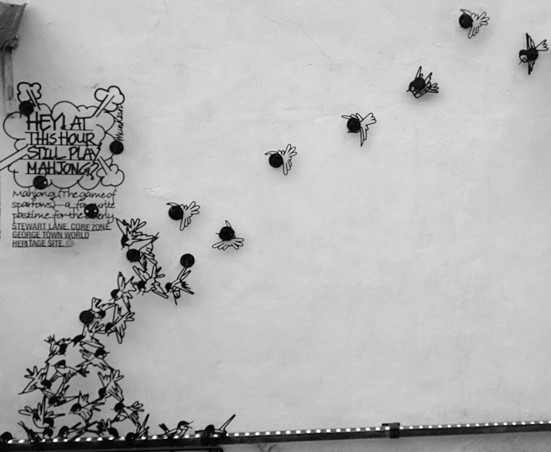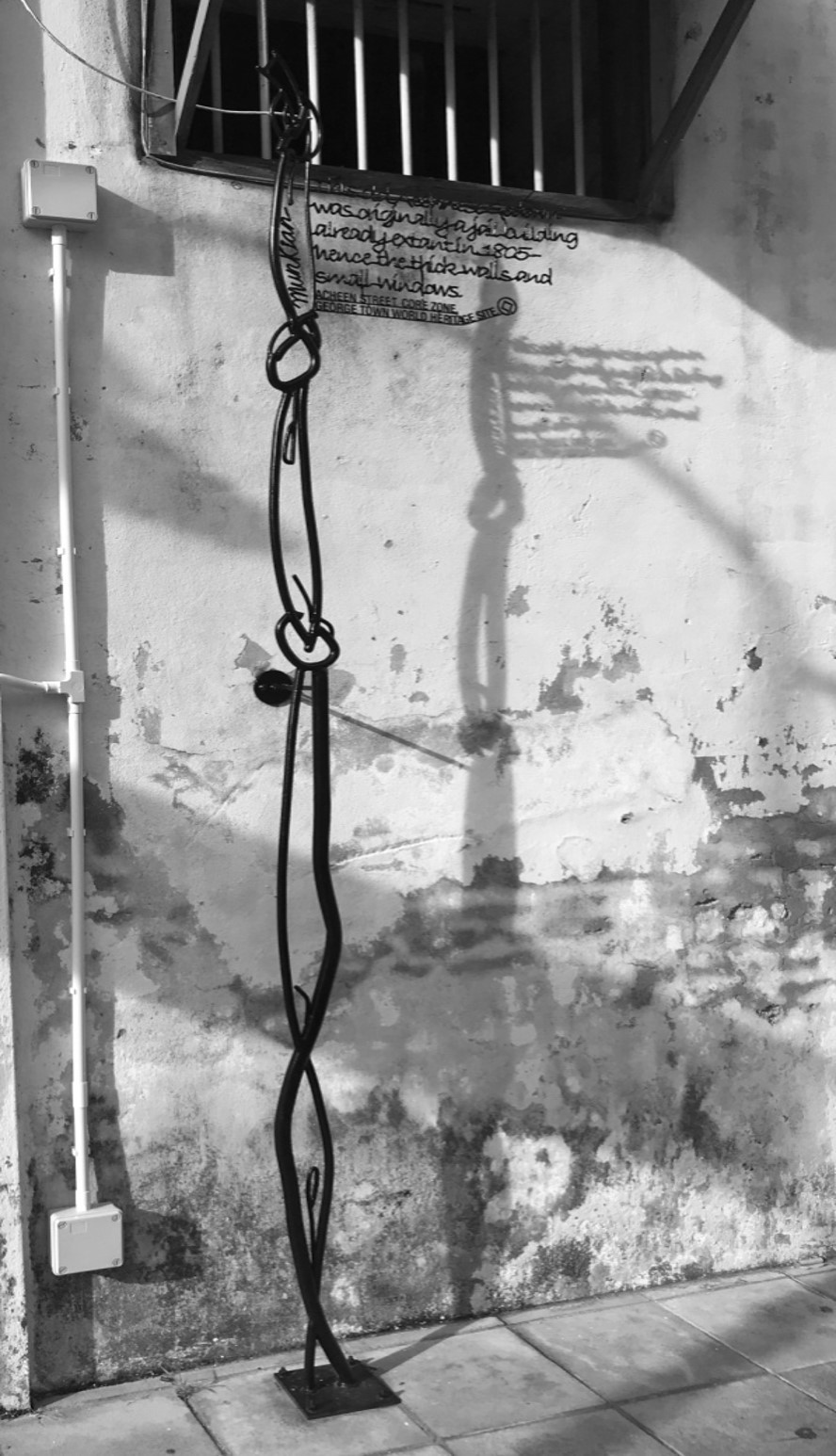Arca
Page 3 of 4
-
SCULPTURE 31 : KANDAR
ADDRESS : NO. 48 LEBUH AH QUEE
URL: SCULPTURE 31 KANDAR
- SCULPTURE 32 : SHORN HAIR
-
SCULPTURE 33 : THEN & NOW
ADDRESS : NO. 89 LEBUH ARMENIAN
-
SCULPTURE 34 : AH QUEE?
ADDRESS : NO. 224 LEBUH PANTAI
-
SCULPTURE 35 : PROCESSION
ADDRESS : NO. 149 JALAN MASJID KAPITAN KELING
-
SCULPTURE 36 : LIMOUSINE
ADDRESS : NO. 153 LEBUH CARNARVON
Today, this area remains a centre both for the production of these items as well as diverse paper product, and coffins too. This sculpture shows that all of the pleasures of the material world can be reproduced on paper for burning.
-
SCULPTURE 37 : CHINGAY
ADDRESS : NO. 53 GAT JALAN PRANGIN
URL: SCULPTURE 37 CHINGAY
-
SCULPTURE 38 : MAHJONG
ADDRESS : NO. 37A LORONG STEWARD
`Mahjong’, a representative portrayal of the popular game, instead alluding to the game`s name with a flock (or `quarrelling’) of sparrows. The mahjong’s a `game of sparrows’ which favourite pastime for the elderly.
URL: SCULPTURE 38 MAHJONG
-
SCULPTURE 39 : CANNON HOLE
ADDRESS : NO. 64 LEBUH ACHEH
Trishaw riders are commemorated in two different sculptures, `Cannon Hole’ and Beca. `Cannon Hole’ marks the 1867 riots between rival secret societies. One of the most intriguing aspects of these riots is that both sides were multiracial, with the Muslim Red Flag association and the Hokkien Tua Peh Kong Society united against the Muslim White Flag and the Cantonese Ghee Hin.
The most serious riots broke out in August that year 1867 of Lebuh Cannon area. In order to put down this unrest, the alarmed colonial authorities called in reinforcements from Singapore, and cannons were fired near the site of this sculpture, leading to today`s Lebuh Cannon. It is said bullet holes from this time can still be found in the walls of surrounding buildings.
-
SCULPTURE 40 : TEMPLE DAY
ADDRESS : NO. 11 LORONG STEWARD
At the centre of `Temple Day’ is a tourist, suitably armed with a camera and copy of guidebook, surrounded by stall keepers selling a bewildering array of temple goods from incense to giant joss sticks, as seen at the stalls alongside the nearby Goddess of Mercy Temple.
-
SCULPTURE 41 : FOR YEOH ONLY
ADDRESS : YEOH KONGSI
This particular sculpture is mounted on the wall of the Yeoh Kongsi, established in 1836 as a benevolent foundation for newly arrived immigrant members of the Yeoh clan. Here we can see a line of new immigrants, each loaded down with all their possessions being scrutinised by an official `with a list’.
-
SCULPTURE 42 : TOK TOK MEE
ADDRESS : NO. 103 LEBUH CHINA
Here we see an itinerant hawker serving up bowls of wanton, or `tok tok’ mee (noodles), so called because hawkers announce their presence by tapping on a piece of hollow bamboo. The contents of a hawker`s trolley – extra bowls, the pile of uncooked noodles and a sieve – are faithfully detailed in this sculpture.
-
SCULPTURE 43 : BORN NOVELIST
ADDRESS : LORONG LUMUT
`Born Novelist is one the few sculptures to celebrate a specific person, in the case Ahmad Rashid Talu, the first to write an original Malay Novel with local setting and local characters.
-
SCULPTURE 44 : PROPERTY
ADDRESS: NO. 33 GAT LEBUH CHULIA
`Property’ celebrates the reclamation of land and the resulting building boom in new godowns and shops along the coast near Victoria Street of Weld Quay. With the pushing out this shoreline, a deep water port was created, allowing larger vessels to dock on the quayside, making loading and unloading cargoes simpler. Trans-shipment into lighters was no longer necessary.
In the background we see a junk and an Indian coolie erecting a sign, `Proposed Reclamation Project’, while in the foreground a merchant and his lawyer anticipate the profits to be made while standing on the existing jetty.
-
SCULPTURE 45 : ESCAPE
ADDRESS : NO. 322 LEBUH PANTAI
`Escape’ is confident, and bold minimalist representation showing a makeshift rope hanging from a berred window. This piece is located on a (warehouse) Gudang along Acheen Street, or the Achehnese Warehouse, one of the oldest building on Lebuh Pantai, Penang.
URL: SCULPTURE 45 ESCAPE
 MS
MS  EN
EN 














